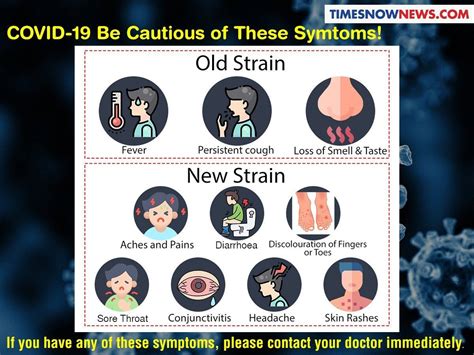When it comes to treating the flu in children, it’s essential to approach the situation with a combination of medical expertise and parental care. The flu, or influenza, can affect anyone, but children are particularly vulnerable due to their still-developing immune systems. Understanding the best practices for treating the flu in children can help alleviate symptoms, prevent complications, and ensure a speedy recovery.
Understanding the Flu in Children
The flu is a contagious respiratory illness caused by influenza viruses. It can cause mild to severe illness, and at times, can lead to hospitalization or even death. Children under the age of five, especially those under two, are at a higher risk of developing serious flu complications. Symptoms of the flu in children can include fever, cough, sore throat, runny or stuffy nose, muscle or body aches, headaches, fatigue, and some people may experience vomiting and diarrhea, though this is more common in children than adults.
Diagnostic Approaches
Diagnosing the flu in children typically involves a physical examination and a review of symptoms. Healthcare providers may also use rapid influenza diagnostic tests (RIDTs), which can provide results in about 15-30 minutes. These tests are not always accurate, so a healthcare provider may diagnose the flu based on symptoms and the time of year, as flu viruses are more common during the flu season.
Treatment Options
Treatment for the flu in children largely focuses on relieving symptoms and supporting the body as it fights off the virus. Over-the-counter medications such as acetaminophen (Tylenol) or ibuprofen (Advil, Motrin) can help reduce fever and alleviate body aches. However, it’s crucial to follow the recommended dosage instructions carefully and consult with a healthcare provider before giving any medication, especially to young children.
For children with a high risk of developing flu complications, antiviral drugs like oseltamivir (Tamiflu), zanamivir (Relenza), or peramivir (Rapivab) may be prescribed. These medications work best when started within 48 hours of symptom onset and can help shorten the duration and severity of the flu.
Role of Rest and Hydration
Rest and hydration are critical components of flu treatment in children. Encouraging your child to get plenty of rest can help their body recover from the infection. Ensuring they stay hydrated is also vital, as it helps replace lost fluids and electrolytes, especially if your child is experiencing fever, sweating, or vomiting. Offer plenty of fluids, such as water, clear broth, or an electrolyte-rich beverage like Pedialyte.
Nutritional Support
While there’s no specific “flu diet,” providing your child with a balanced diet rich in fruits, vegetables, whole grains, and lean proteins can support their recovery. Soups, like chicken noodle soup, can be comforting and provide essential nutrients. Avoid forcing your child to eat if they don’t feel like it, but offer small, frequent meals to keep them nourished.
Managing Complications
In some cases, the flu can lead to complications such as pneumonia, bronchitis, sinus and ear infections, or worsen chronic health conditions like asthma or heart disease. Monitoring your child closely for signs of complications, such as difficulty breathing, chest pain, severe headache, or if their fever worsens or doesn’t improve with medication, is essential. If you notice any of these symptoms, seek medical attention immediately.
Prevention Strategies
Preventing the flu involves a combination of vaccination, good hygiene practices, and avoiding close contact with people who are sick. The Centers for Disease Control and Prevention (CDC) recommends annual flu vaccination for all individuals six months and older, with a few exceptions. Practicing good hygiene, such as frequent handwashing with soap and water, covering the mouth and nose with a tissue when coughing or sneezing, and avoiding touching eyes, nose, and mouth, can significantly reduce the spread of the flu.
Creating a Supportive Environment
As your child recovers from the flu, creating a supportive environment can play a significant role in their recovery. Ensuring their room is well-ventilated and at a comfortable temperature can help alleviate congestion and promote rest. Using a humidifier can add moisture to the air, relieving a sore throat and cough. Avoid smoking or allowing smoking around your child, as secondhand smoke can exacerbate respiratory issues.
Decision Framework for Parents
When dealing with a child who has the flu, making informed decisions about their care can be challenging. Here are some key factors to consider:
- Severity of Symptoms: If your child’s symptoms are severe or worsen over time, seek medical attention.
- Risk Factors: Children under five, especially those under two, and those with chronic health conditions are at a higher risk for complications.
- Vaccination Status: If your child hasn’t received a flu vaccine for the current season, consider getting them vaccinated as soon as possible.
- Hygiene Practices: Ensure good hygiene practices are followed to prevent the spread of the flu to others.
Future Trends in Flu Treatment
Research into flu treatment is ongoing, with advancements in antiviral medications, vaccine technology, and diagnostic tools offering promise for more effective prevention and treatment strategies. The development of universal flu vaccines that could provide protection against all flu strains is a significant area of research, aiming to reduce the annual burden of the flu.
FAQ Section
How can I prevent the flu in my child?
+Preventing the flu in children involves annual flu vaccination, practicing good hygiene such as frequent handwashing, and avoiding close contact with people who are sick. Maintaining a healthy lifestyle, including a balanced diet and regular exercise, can also support immune function.
What are the most common complications of the flu in children?
+Common complications of the flu in children include pneumonia, bronchitis, sinus and ear infections. In children with underlying health conditions, the flu can also worsen these conditions, such as asthma or heart disease.
How long does the flu last in children?
+The flu typically lasts about one to two weeks in children, but fatigue and cough can persist for a longer period. It's essential to monitor your child's symptoms and seek medical attention if you notice any signs of complications or if symptoms worsen over time.
Can my child go back to school after having the flu?
+It's generally recommended that your child stays home from school until at least 24 hours after their fever is gone without the use of fever-reducing medications. This helps prevent the spread of the flu to others and ensures your child is well enough to participate in school activities.
How can I distinguish between the flu and a common cold in my child?
+The flu and the common cold can share similar symptoms, but the flu tends to cause higher fever, more pronounced fatigue, and muscle aches. If you're unsure or if your child's symptoms are severe, consult with a healthcare provider for an accurate diagnosis and appropriate treatment.
Can antiviral medications be used to treat the flu in children?
+Yes, antiviral medications like oseltamivir (Tamiflu) can be prescribed for children with the flu, especially those at high risk for complications. These medications work best when started within 48 hours of symptom onset and can help shorten the duration and severity of the flu.
In conclusion, treating the flu in children requires a multifaceted approach that includes medical treatment, supportive care, and preventive measures. By understanding the symptoms, complications, and treatment options available, parents can play an active role in their child’s recovery and well-being. As research continues to advance our understanding of the flu and its treatment, staying informed and proactive is key to protecting your child’s health.



